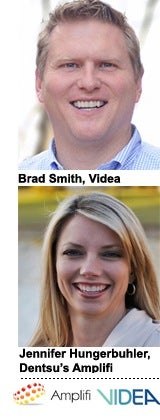 Programmatic TV doesn’t exist?
Programmatic TV doesn’t exist?
Don’t tell that to Dentsu’s media agency, Carat, which just reserved inventory programmatically across five local broadcasters.
The upfront commitment, finalized this week, was executed with Videa, a private exchange/supply-side platform owned by Cox Media Group.
The commercials will appear on Cox local affiliate stations, including CBS, Fox, NBC and ABC, throughout the first half of 2017.
How it works: After Cox’s local affiliates price and package their unsold broadcast inventory, that local inventory becomes available in Videa.
This deal encompassed forward reserve inventory, meaning buyers aren’t getting last-minute, remnant inventory. Rather, they are buying full-schedule inventory up to a year in advance. That reserved inventory can be broken up into flights and specific dayparts or programming.
Key to the deal’s success was Videa’s integration with Carat’s workflow system, Mediaocean Spectra.
Tasks that would have taken days or weeks happened in seconds, said Brad Smith, SVP of revenue and operations for Videa. Streamlining the television reservation process allowed the agency to “pull multiple pieces of information together,” he added.
Unlike a real-time bidded buy in digital, however, the programmatic TV deal happened privately between the agency and the local stations.
Videa provided the private marketplace technology where each station group provided details and rules around their inventory.
Eventually, Cox and Carat hope to apply viewership data and audience attributes.
“TV is a legacy medium and we needed to automate a lot of the transactional part of what we do,” explained Jennifer Hungerbuhler, EVP and managing director of local video and audio investment for Amplifi, the Dentsu media investment unit that worked alongside Carat to orchestrate the deal.
“We ultimately want to find the right audiences to target our goods and services to, so we absolutely want to layer in more data so we can do more informed buying,” she added.
The benefits of buying across five local TV stations from a single system, for now, are scale and reduced overhead.
“It really isn’t effective for us if there are eight television stations in the market and only one of them has the ability to transact programmatically or in an automated fashion,” Hungerbuhler said.
Once Amplifi determines the performance of Carat’s programmatic TV buy, it will evaluate similar TV reservation opportunities for other Dentsu agencies.
“I want to keep going down this path and try to make this as seamless as possible, remove friction and ultimately get to a full audience-based buy down the road,” Hungerbuhler said. “We’re already working on those pieces within the broader Dentsu operating framework.”














